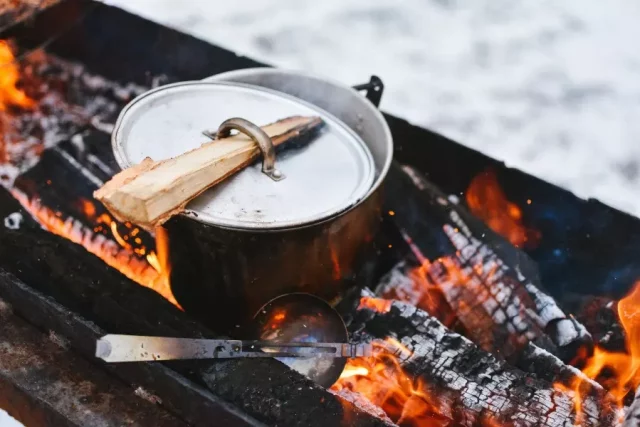When you’re looking to build an outdoor kitchen, there are a lot of factors to consider. You need to think about the weather in your area, how the kitchen is going to fare during the seasons, and what additional features are needed to protect things from the environment. You need to think about your cooking style and preferences—maybe you even want to take a cooking class or two to see if you’re comfortable using a pizza oven or a dutch oven. There might be landscaping considerations, and while you’re at it, you might want to change up the back door because it’s always getting caught, and you want a smooth transition to your new kitchen. One of the major decisions you’re going to have to make early on in the planning process is whether you want a prefab outdoor kitchen or a custom-built one. The following will explore that dilemma in-depth, highlighting the benefits and drawbacks of each option so you can make the best choice for you and your household.
What Is Prefab?
Before diving in, it might prove useful to specify what is meant by prefab. This is a term that comes up a lot in the interior and exterior design world but often isn’t explained. Prefab is short for prefabricated and refers to things that are manufactured in standard colors, shapes, and sizes and are shipped to stores or customers. Prefab can refer to individual items like appliances but also to entire kitchens or even entire homes. There are countless reasons why someone might prefer prefab or prefer custom-built, given their needs and vision for a project.
It is worth noting that hybrid options are possible. You might find yourself interested in some prefab elements while ordering custom options for other elements. This is completely okay; just know that if you decide to go hybrid, it might be best to secure your prefab elements before you select your custom-built ones. You can alter your custom elements to work with your prefab ones, but you can’t alter prefab options to work with custom ones.
Flexibility
If you’re someone who wants a lot of flexibility, custom-built is usually the route that offers the most options. While prefab elements come in a variety of options, these options tend not to be drastic. If you want to be completely free to make every detail of your outdoor kitchen specific to your tastes and vision, like this guide points out, custom-built is going to be worth your consideration. Any size, shape, color, and feature is possible when you go the custom route.
Financial Considerations
When it comes to the cost of your outdoor kitchen, prefab tends to be the better deal. There will be exceptions on occasion for specific items, but it’s safe to assume that prefab elements are less expensive. This is because they can be mass-produced, which results in a lower cost of construction. If you’re looking to keep your budget pretty contained, prefab or mostly prefab is likely the right route for you.
Specific Needs
If you have specific needs like unusual water or electrical hookups or accessibility considerations, custom-built options are likely going to be a better fit. Given that there are only so many options with prefab, you might find that your unusually-sized and shaped space isn’t being well used by the standard elements. Likewise, if someone in your household has requirements for accessibility or safety reasons, you might have to look at custom options.
Speed Of Renovation
Here’s where things get a bit more competitive. Typically, prefab options are a bit faster as everything can be ordered and then put together once it arrives. You don’t have to wait for the planning stage or the manufacturing stage—the pieces of your outdoor kitchen are sitting in a warehouse somewhere waiting to be ordered by you. This being said, occasionally, custom-built outdoor kitchens can get competitive with the speed of the renovation if the person you’ve hired to help plan everything is well-connected. Experienced teams even know how to avoid some time-consuming parts of the process.
As a side note, it’s generally a good idea to assume that your renovation is going to take longer than expected. Surprises occur. You might find a nest of endangered birds that need to be picked up by a wildlife conservation specialist before construction can continue. You might discover that the plumbing in the wall is all sorts of wonky, and you need a plumber to come and sort everything out before you can hook up water to your outdoor kitchen. You might discover lead pipes, unidentified wires, valuable minerals—the list goes on and on. To reduce feelings of disappointment or overwhelm, assume that the project is going to take at least 30% longer than you think it’s going to take.
Lifespan Of Your Outdoor Kitchen
It’s a sad aspect of modernity that many things are not built to last. Most companies have conducted in-depth studies about the shortest period of time something can function for a while, still leaving customers with the feeling their money was well spent; this is called planned obsolescence. They design products to become obsolete at this magic point so that customers return and buy another one as soon as possible. Of course, not every company does this, but a shocking amount does. You’re more likely to run into products with a shorter life span in the prefab space. You also have the option of planning your custom-built outdoor kitchen with longevity in mind.
Uniqueness
If you’re someone who doesn’t like to have the same thing as everyone else, you’re likely leaning towards a custom-built outdoor kitchen. You can tweak popular designs to create something that feels special and one-of-a-kind. You can even spend a bit of time thrifting or exploring antique stores to find rare items to incorporate.
The above information should have highlighted the man pros and cons of prefab and custom-built outdoor kitchens. Take your time when making the decision, and be sure that whichever route you go, you keep in mind how easy it is to clean and maintain the elements you select. An outdoor kitchen isn’t as much fun if you’re always scrubbing it down.














